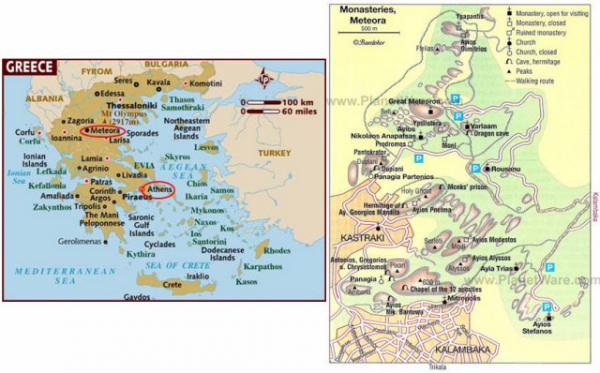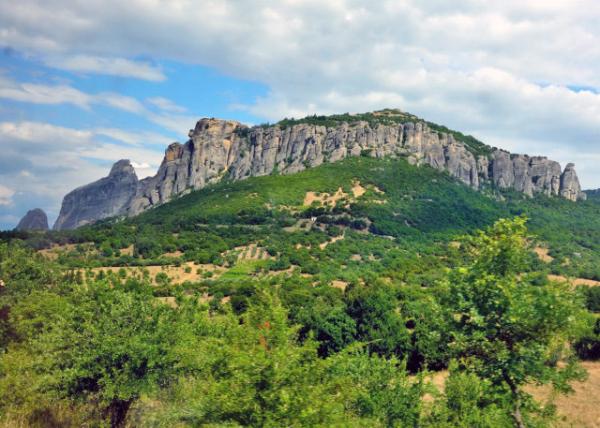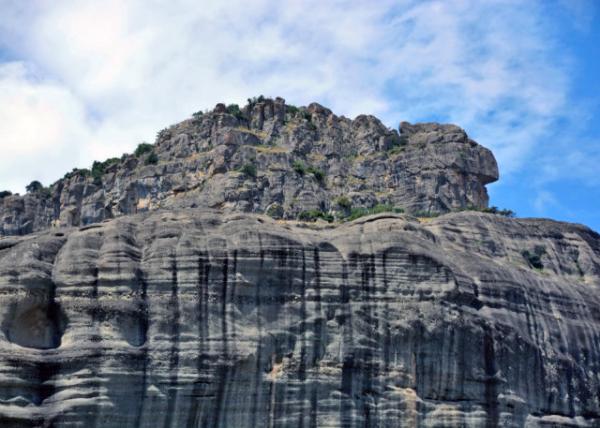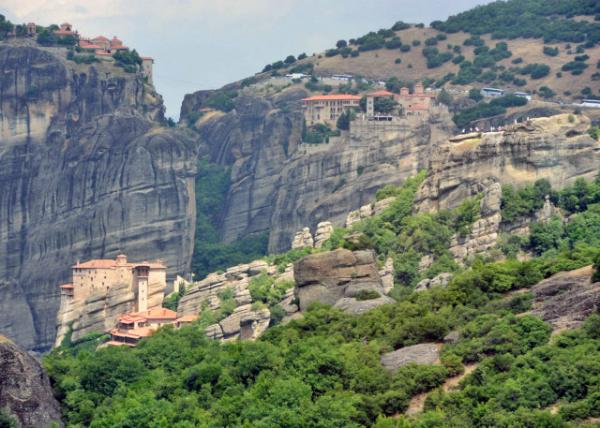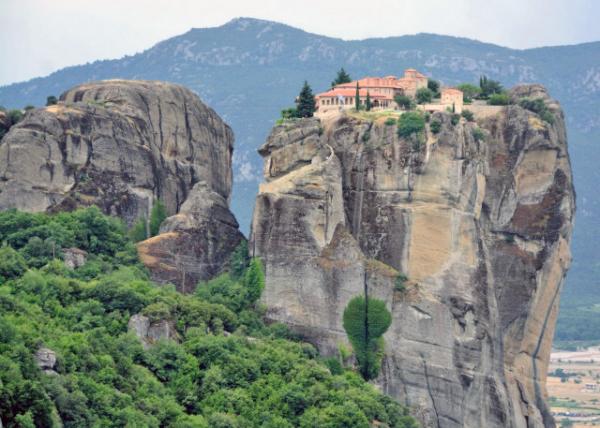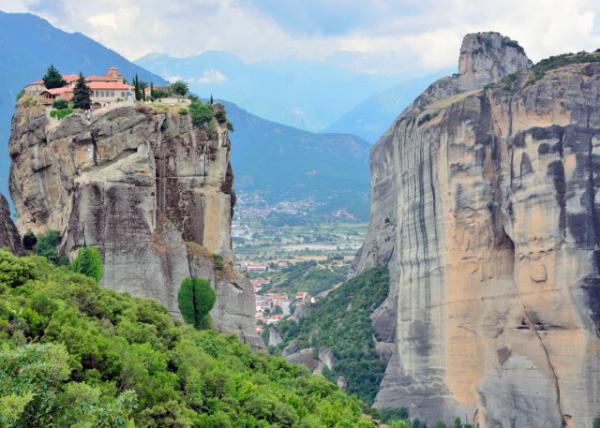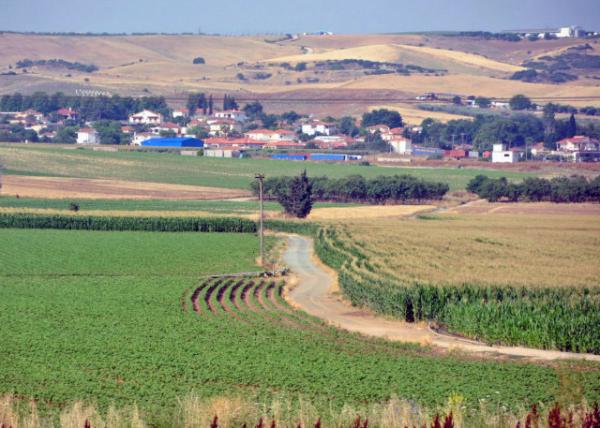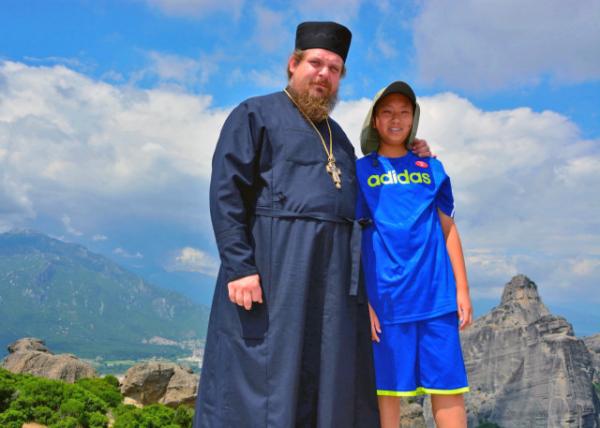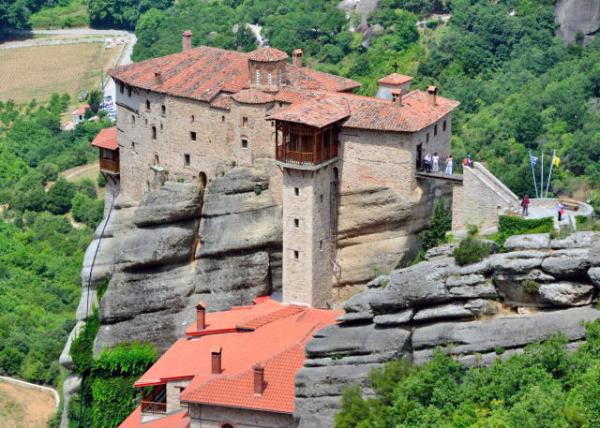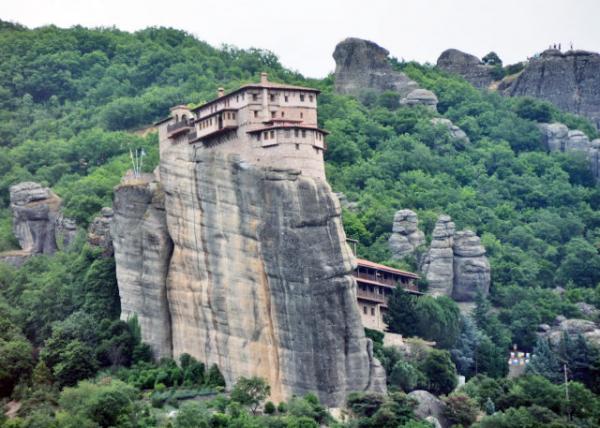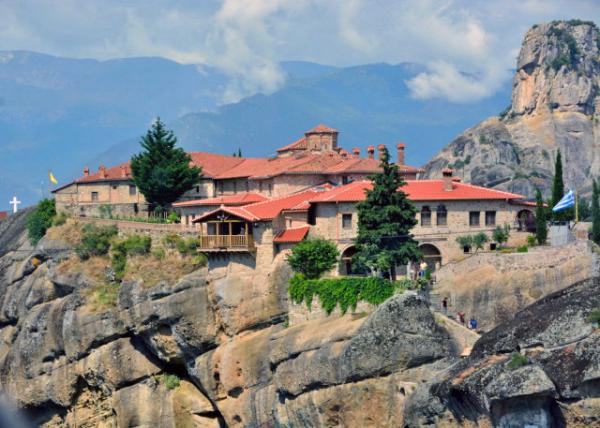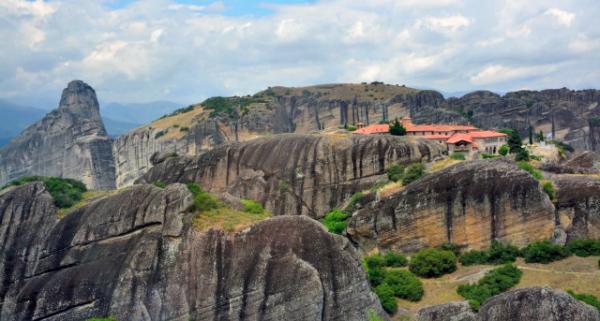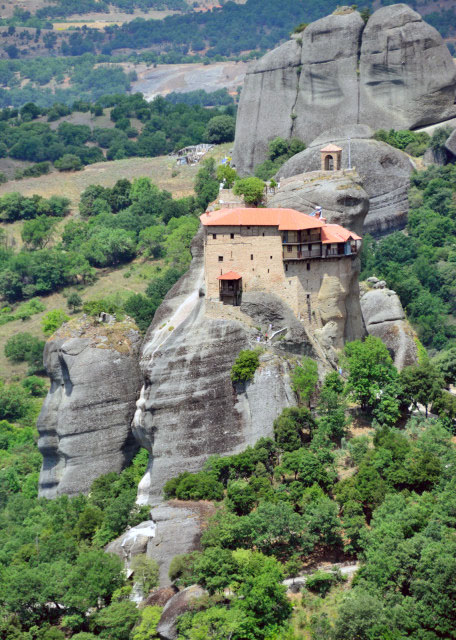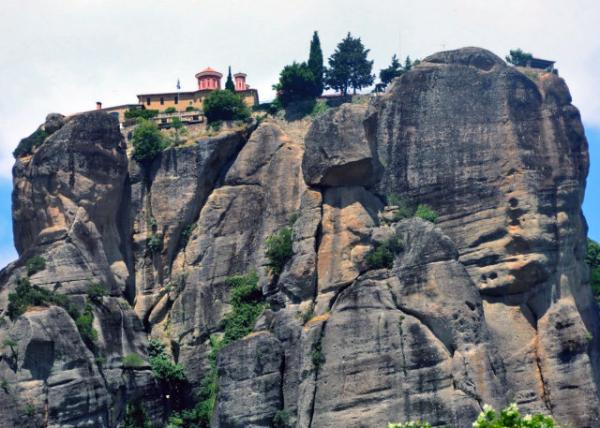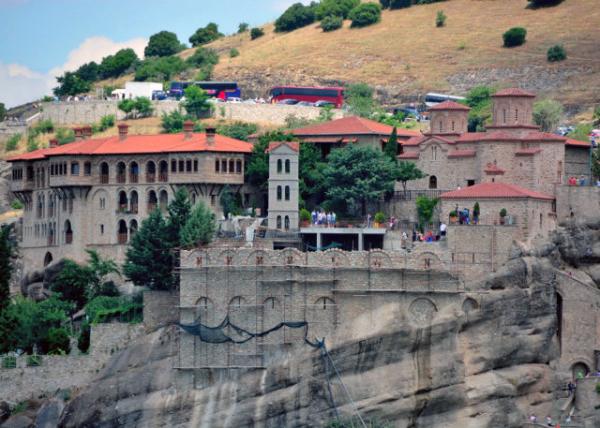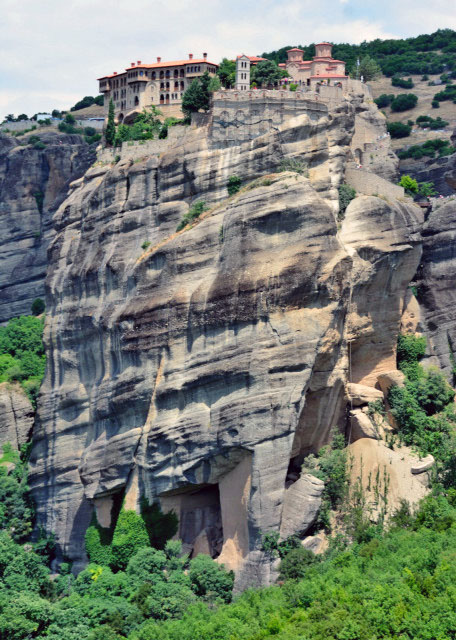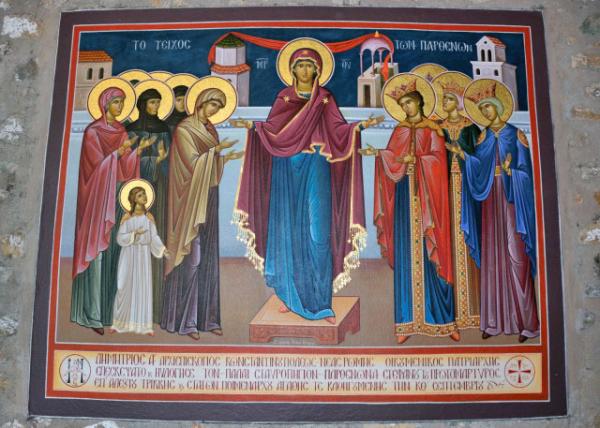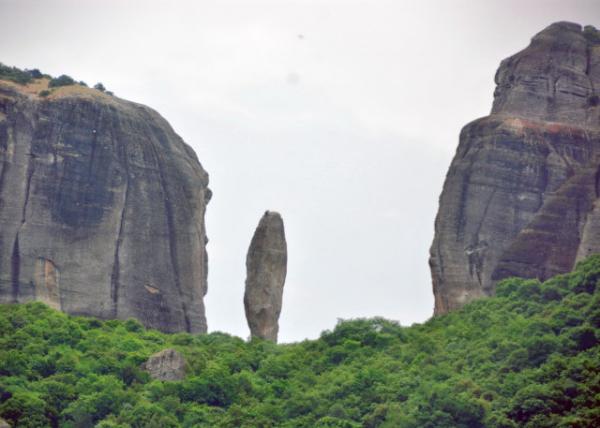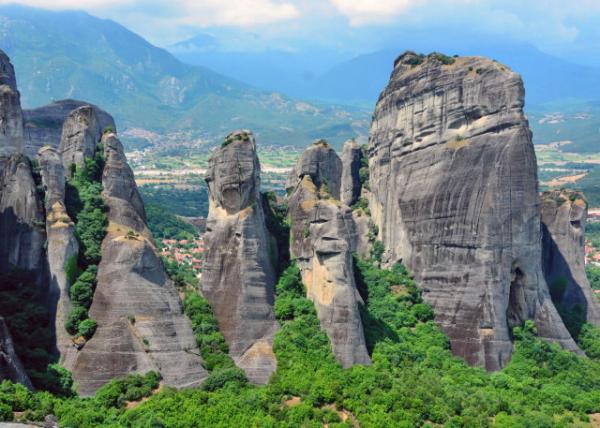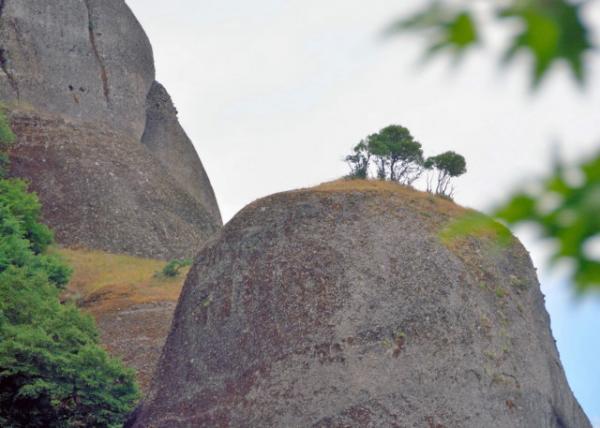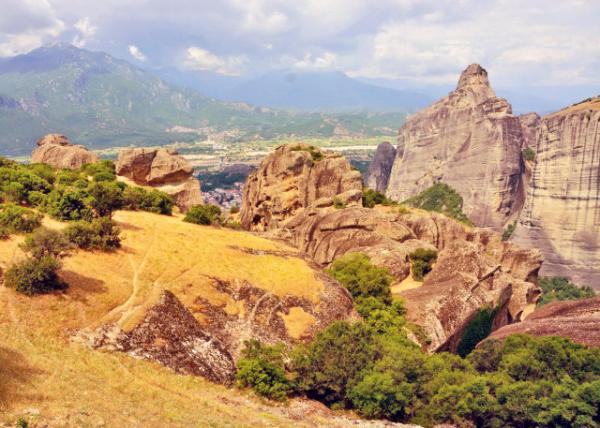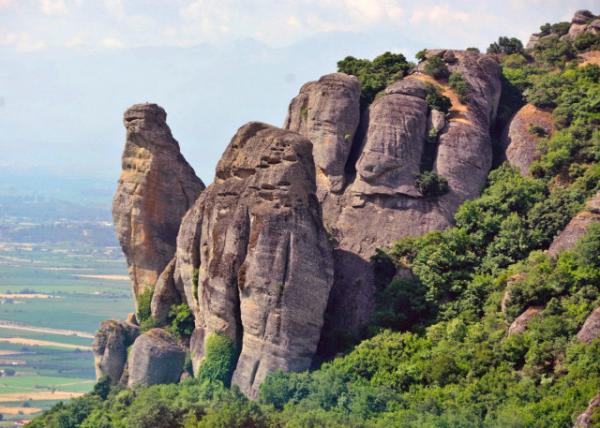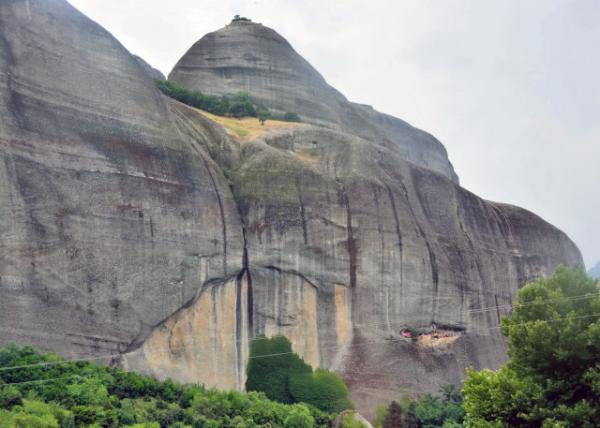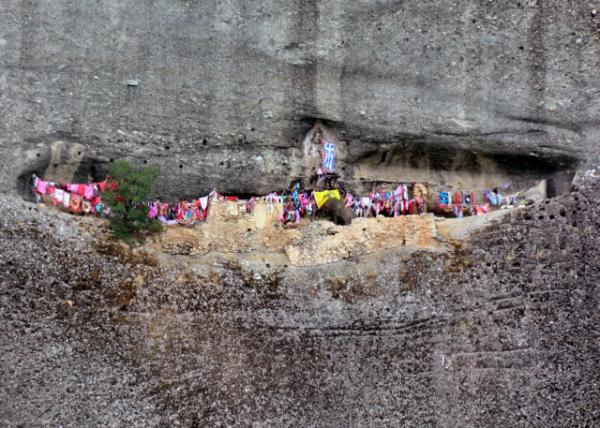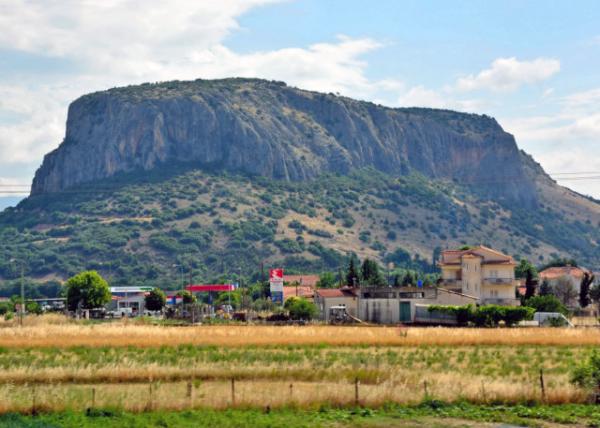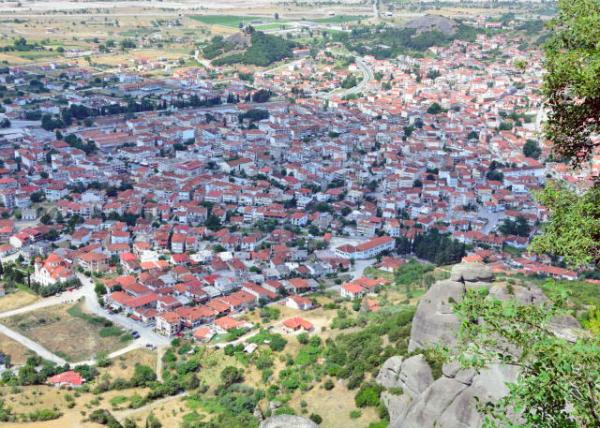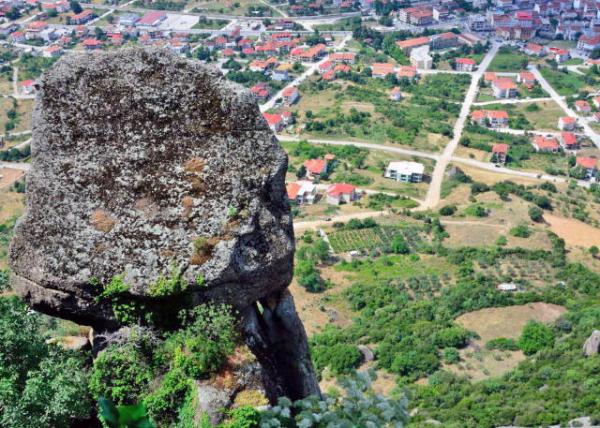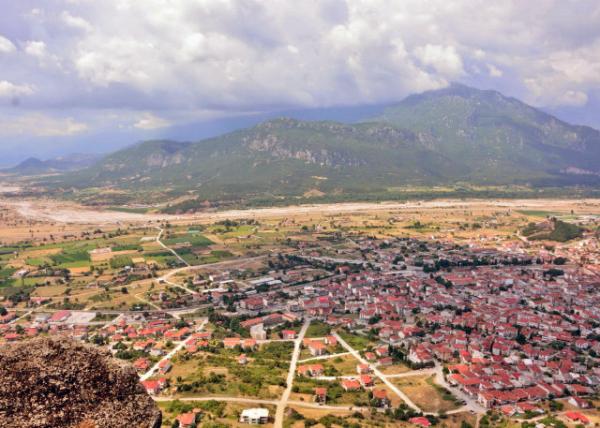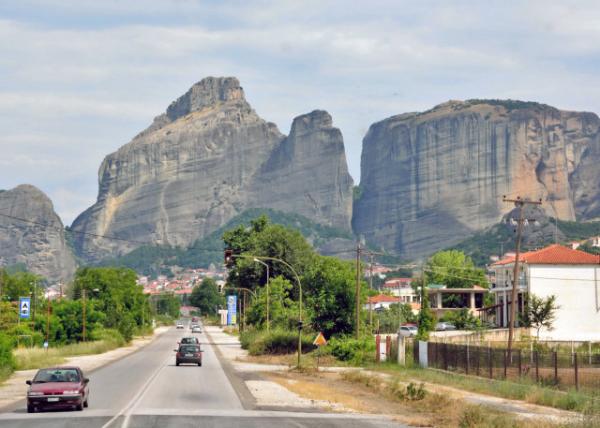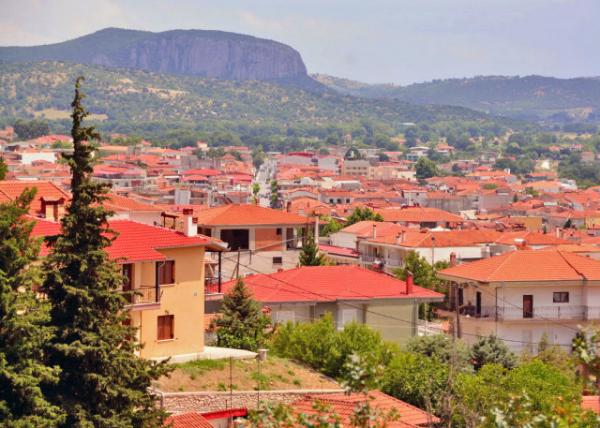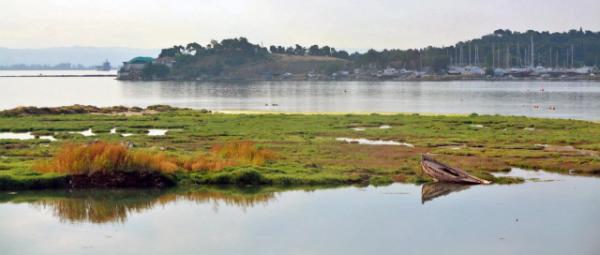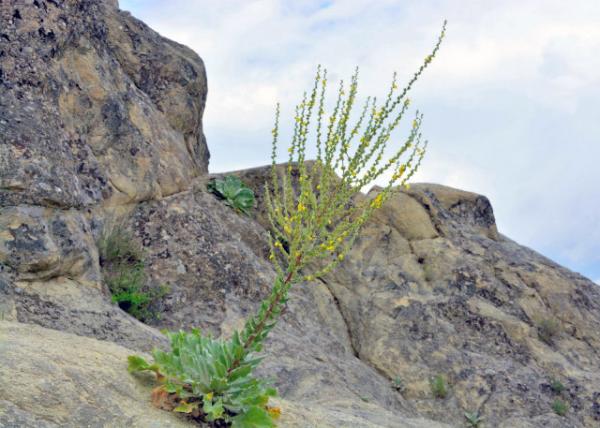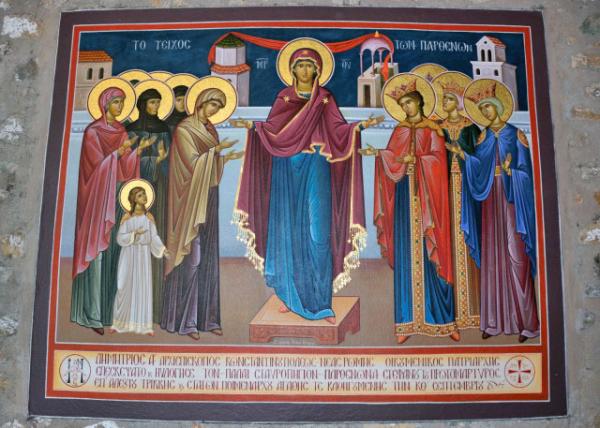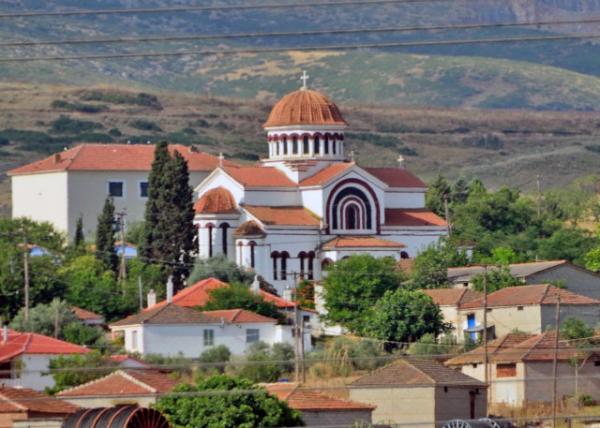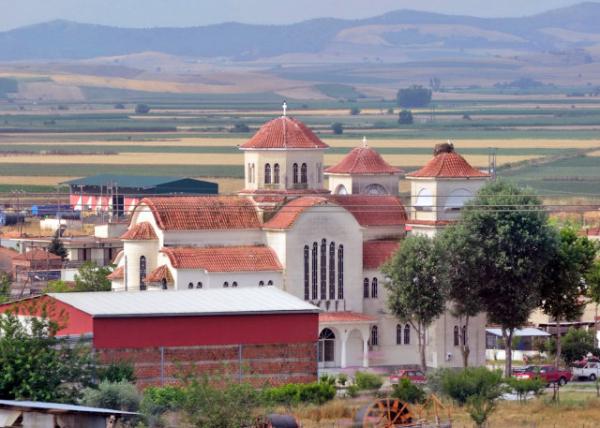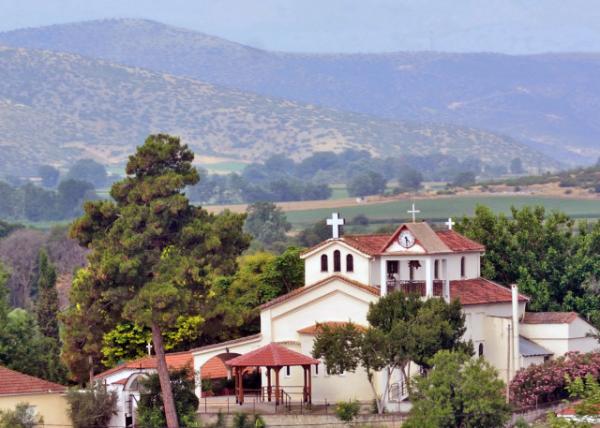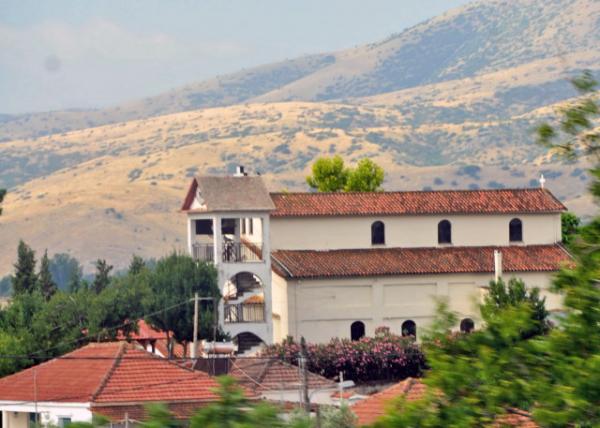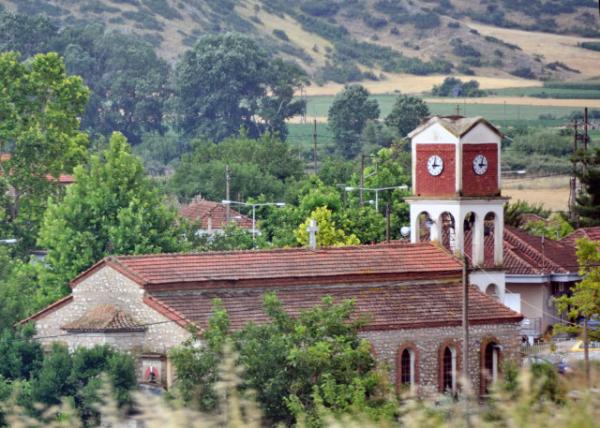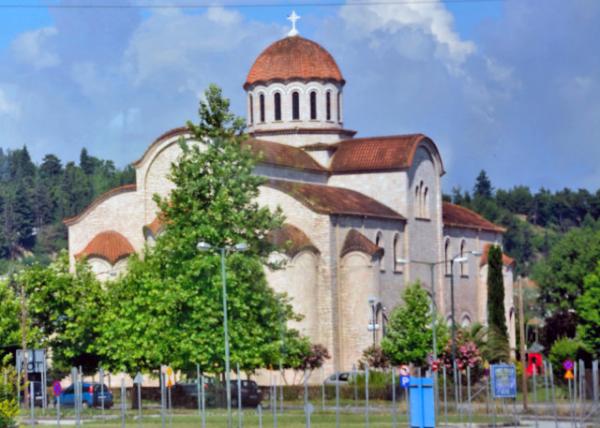| A life of Religion in Meteora, Greeck(希臘曼代奧拉的宗教生活) |
| 送交者: 天邊的紅霞 2020年04月28日20:37:01 於 [五 味 齋] 發送悄悄話 |
|
2015-06-21
【Aiden in English】 Imagine having a house up in the mountains hovered in the air. Wow, imagine living in it. Imagine surviving with no internet, no roads, no cars, and to reach any other civilization meant a walk straight down. That came around about 400 years ago. Nowadays, a road allows tour busses to reach Meteora of Greece. Its spectacular landscape has derived from an extensive ongoing gravel deposits over the time and become the well-known “columns of the sky”. Perched on remarkable pinnacles of sandstone rocks are the orthodox monasteries that functioned as refuge to avoid the Ottoman’s invasion and dangerous bandits back to the medieval era. And just saying, the hermit monks went to the extremes to build the wonder off the sheared cliffs high atop where it was once virtually inaccessible. Well, actually it’s these things because there used to be 24 monasteries, but what remains is six and smaller ones that somehow survived the churning tides of time. Egypt’s pyramids were unbelievable to build, considering how heavy the stones weighted. The Great Wall of China was incredible just thinking about building something so long over three different dynasties. The settlement of all monasteries was just as grueling and tough to build as any other ancient great structures. The climb from the bottom is exhausting to even think about it. At times, the mountain stood vertically and a tower of rock formation known as stone pillars jutted out from the sides. And for a quest for solitude and enlightenment, instead of setting up shop in the mountains like normal people, the monks 400 years ago decided to their religious monuments on the rock towers. They traveled using rope ladders and rope pulley system with a net basket. The rocks went straight up, so water had to be collected everyday by the monks still living inside. Yet, there are still some of them feeling the life of hardships. They prayed all day, but doing chores became a little different through the years. There is the help of technology now, and the tourism gave the monasteries some money as well. I wonder if a landlord charges tax in this area. The isolation comes with gifts as well. The monks were blessed with an amazing view of the surrounding. 400 years ago, this gift was used to scout enemies and to be on the lookout. Tourism changed the gift into a flurry of amazing photographs. A small town of simple triangular-roofed red houses began at the slope of the mountain. A ring of lush mountains surrounded the area, reminding me of a giant crater. But the guide said that it used to be an enormous lake. Throughout the ages, earthquakes changed the geography of the land and the water flowed away. What remained was a land that became Greece most fertile agricultural land. Most of the land became farms, and forming the fields came with the freshest olives, cotton, corn and wheat. One’s lose was tamed to another’s treasure, and it is a saying that will survive through, well, forever. I would happily take the president’s trash, since I’m sure something valuable will be hiding in there. And through the years, this area grew more and more famous. Incidentally, the quality of places is also viewed as time flew by. Since Meteora’s monasteries were done 4 centuries ago, time has made this area a priceless piece of art work, stunning to anyone who enjoys treasure hunting. Why? It is the very land that is a treasure itself. And just imagine that the motivation gave impetus to do it. Religion can really be the fuel to man-power at the time. 400 years ago, a group of monasteries were built by hand, the supplies were carried by back, and the experience was filled with sweat and tears. 400 years later, who would know that a young boy is writing about the effort spent to make this marvel what it is today. IT’S ME IF YOU DON’T KNOW! 【紅霞譯文】 試想一下,群山峻岭之巔高懸空中樓閣;哇塞,設想一下棲身於此每天的日常起居;再細想一下,生活在沒有互聯網、沒有道路、沒有汽車、惟有萬仞峭壁與外界相通的世界。 上述場景定格在400多年前,如今旅遊大巴浩浩蕩蕩開進希臘被譽為“天空之柱”的曼代奧拉,大自然鬼斧神工,逐漸將這一帶砂岩地貌打造得怪石嶙峋,峰林層巒疊嶂。位於石柱頂尖,具有中世紀遺風的東正教修道院巍然聳立,當時為了躲避奧斯曼入侵遠離匪徒騷擾,隱士僧人無畏艱辛困苦,勇敢地挑戰自身極限,在人跡罕至的懸崖壁上創出奇蹟,隨着時光推移歲月磨蝕,原本廿四所修道院中僅剩下規模較小的六所得以倖存。古埃及巧奪天工,用巨大無比的石頭修建金字塔,令人嘆為觀止;中華民族氣吞山河,三個朝代前仆後繼築起萬里長城,名聲傳遍天下;古希臘別具匠心,愣把宗教精神寄託到遙不可及的淨土樂園裡,別說爬了,就是從底部抬頭朝頂部望去,心中頓感慌恐不安。有時山勢陡峭垂直,石柱從側面凸起,400年前苦行僧們非同凡人,既耐得住孤寂又幹得出大事,打定主意一定要在天空之柱上開闢新天地。他們把繩索做成梯子,並將滑輪綁上筐子當作交通運輸工具;儘管岩石直起直落,可住在石柱頂上面的人每天都要下來取水,生活的艱辛由此可略見一斑。僧人們終日祈禱,一年四季輪流打理不同事務。新技術的出現以及遊客的饋贈,使得修道院的生活條件得到改善,但我心存好奇,不知道地主是否從中抽利。 與世隔絕的地方定有獨到之處,身居其中的隱士有幸飽覽周圍壯麗山色,而這些奇觀異景從前均被用作瞭望台來觀察敵人動向。到此一游的朋友無不以此為快,噼哩啪啦按下快門。山坡下面的小鎮三角形紅色房頂耀眼奪目,鬱鬱蔥蔥的群山環抱山谷,令我禁不住聯想起巨型火山口,不過據導演介紹,很久以前這裡一片汪洋,多年來地震改變了地質形態,從此河床從視線中消失,結果遺留下來的土地成為希臘最肥沃的農業基地,該地區大部分土地被用來開墾農田,主要農作物有橄欖、棉花、玉米和小麥,失之東隅收之桑榆,古諺說得千真萬確,保不齊我也樂意給總統當差,沒準能發掘意外收穫。碰巧的是,越是古老的寶地越發受人矚目;無疑,具有四百年歷史的曼代奧拉修道院堪比一件藝術珍品,尤其對那些愛好尋古探幽的人來說,為什麼呢?無非淵於自然景觀,其潛在的動機無不打動來訪者內心深處,當時的宗教思想激發了人們飽滿鬥志。 400年前的過去,建造修道院群完全用手搭靠背扛,勤勞的汗水和辛酸的眼淚交織在一起;400年後的今天,有誰想得出一位風華少年正揮筆記錄自己的所見所聞,如果你不認識他,那麼讓我來告訴你,正是本人!
|
|
|
|
|
 |
 |
| 實用資訊 | |
|
|
|
|
| 一周點擊熱帖 | 更多>> |
|
|
|
| 一周回復熱帖 |
|
|
|
|
| 歷史上的今天:回復熱帖 |
| 2019: | 讓幺幺忽悠了,真以為雙鴨山大學 是孫 | |
| 2019: | 我很懷疑參議員格萊姆本人就是俄國間諜 | |
| 2018: | 金三至少是信了鄧小平的一句話 | |
| 2018: | 沒有槍,中國有多安全? | |
| 2017: | 小朱為什麼未能得手? | |
| 2017: | 今天抓的住老拳麼? | |
| 2016: | 這個美女留學生的腿象冬冬的麼。呵呵 | |
| 2016: | 習大大最近被搞得很狼狽. | |
| 2015: | 67年新洲牛瓦克黑人暴亂使得該城墮入萬 | |
| 2015: | 老帽:跟猶太房東老太吵了一架 | |




